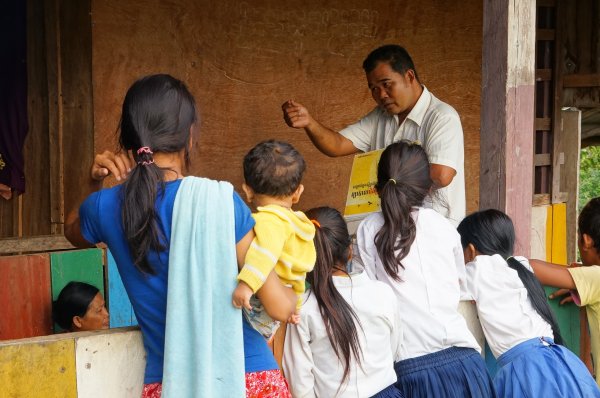Latest WWARN publication identifies 15 new mutant alleles in the Kelch-13 gene
A recent WWARN individual patient meta-analysis has gathered 18 published and unpublished studies from Africa and Asia to explore the relationships between identified Kelch 13 mutant alleles and delayed parasite clearance. The study results show one P. falciparum specific mutant and 20 pfk13 propeller region mutant alleles are strongly associated with the slow clearance phenotype, including 15 mutations that have not been confirmed before. It was reassuring that no pfk13 alleles associated with slow parasite clearance were observed in the parasites from African studies gathered between 2000-2017.

Artemisinin-based combination therapies (ACTs), widely used for uncomplicated malaria treatment, have contributed to the dramatic reduction in global health burden of malaria over the last decade. However, the emergence of Plasmodium falciparum resistance to artemisinin in the Greater Mekong Sub-region jeopardises this progress. Resistance to artemisinin has been associated with delayed parasite clearance after ACT or artemisinin monotherapy treatment and a variety of mutations in the propeller region of the Kelch 13 gene, widely distributed in the Mekong region.
To characterise the impact of different pfk13 mutations on parasite clearance, the WWARN K13 genotype-phenotype Study Group collaborators conducted an individual patient data (IPD) meta-analysis of the associations between parasite clearance half-life (PC1/2) and pfk13 genotype in a large set of 3,250 individual patient records from Asia and Africa.
The IPD study results affirm that the slow clearance phenotype that has evolved in P. falciparum parasite populations in response to artemisinin challenge is complex and can involve at least one nonsynonymous change in the P. falciparum specific region of the pfk13 gene, but most frequently consists of specific single mutations in the propeller region.
The IPD meta-analysis demonstrates that 14 pfk13 propeller mutants, in addition to the 6 previously validated, are associated with prolonged parasite clearance and could be considered for implementation as molecular markers in the Greater Mekong Subregion, as a potential early signal of slow parasite clearance.
The paper also confirms the reassuring news that outside of Southeast Asia, common pfk13 mutant alleles are not associated with slow clearance. However, the research team suggest that further testing of a more sensitive protocol, than persistence of parasites on day 3 after treatment, is urgently needed to serve as a first signal of possible prolonged parasite clearance outside the Greater Mekong Sub-region.
"These different pfk13 propeller mutations may also compromise parasite fitness", says lead author Prof Carol Sibley, "We will need more genomic studies to further define additional changes that may allow parasites with pfk13 mutations to thrive and spread even when they carry a pfk13 mutation that by itself, compromises a parasite's viability.
"Moreover, there may be mutations in other parts of the P. falciparum genome that can mediate reduced response to artemisinin treatment even when a parasite has no pfk13 mutation. Despite this complexity of the phenotype, the appearance and selection of mutations in the pfk13 propeller region are valuable markers that enable us to keep a close watch on diminished artemisinin responsiveness in P. falciparum populations in the Mekong Region and perhaps in the Americas and Africa as well."
Read the paper: WWARN K13 Genotype-Phenotype Study Group. Association of mutations in the Plasmodium falciparum Kelch13 gene (Pf3D7_1343700) with parasite clearance rates after artemisinin-based treatments—a WWARN individual patient data meta-analysis. BMC Medicine. 17 January 2019. BMED-D-18-00854R2
Visit the WWARN Artemisinin Molecular Surveyor, an interactive map that summarises the prevalence of molecular markers in the propeller region of the Kelch 13 gene of the malaria parasite by location and year. The map provides a clear and standardised visualisation of the evidence to date to inform monitoring strategies. Please note that the Surveyor displays all mutated alleles, without distinction of the alleles that affect clearance.
See K13 genotype-phenotype Study Group background.

